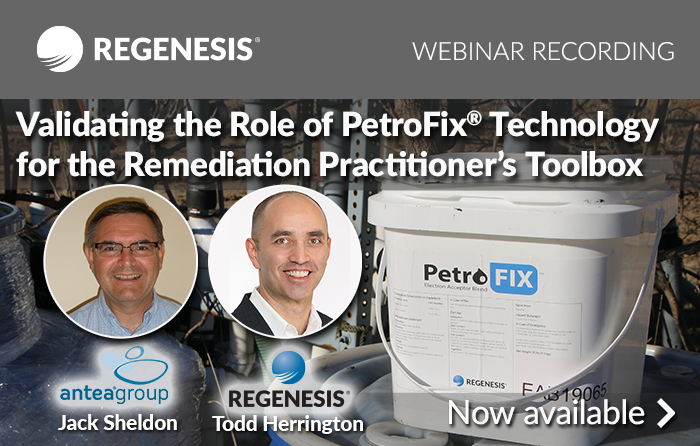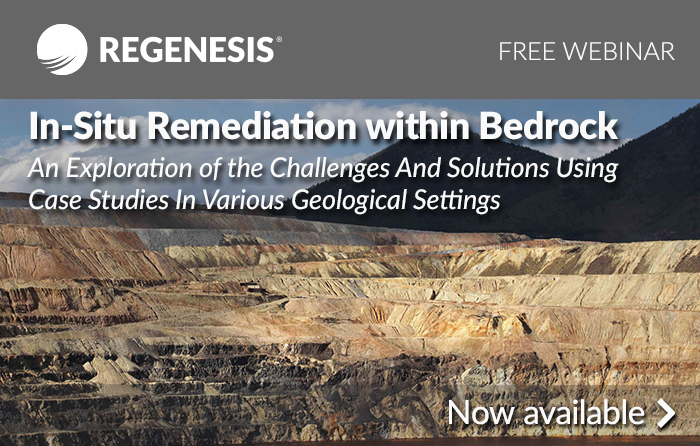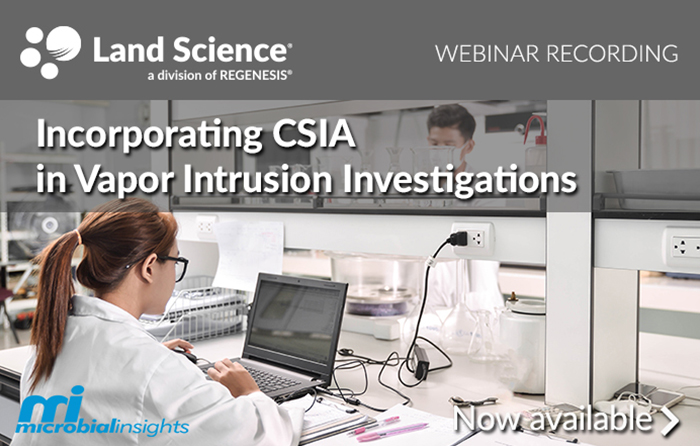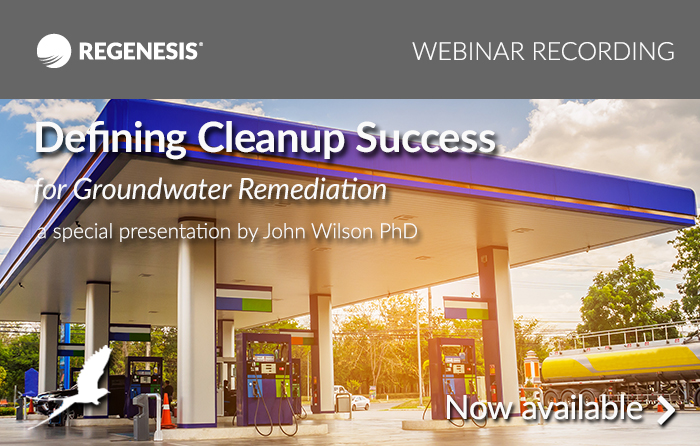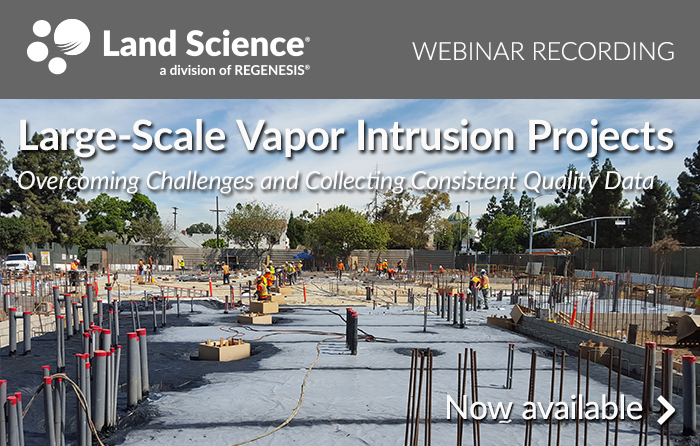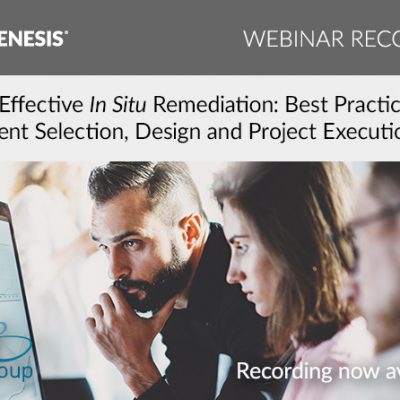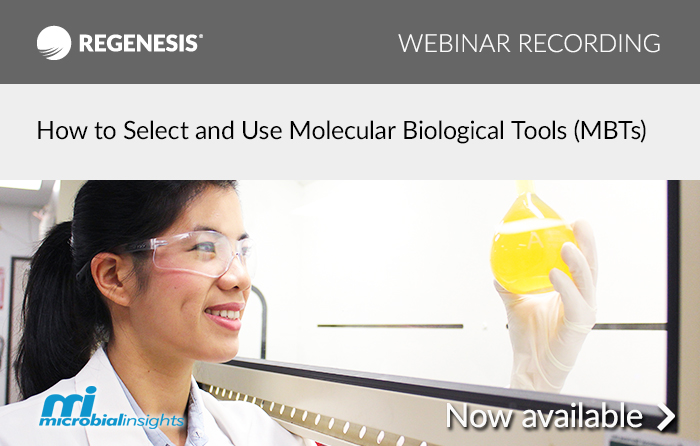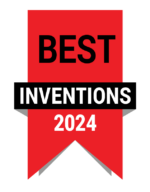Validating the Role of PetroFix®Technology for the Remediation Practitioner’s Toolbox
In this webinar we were pleased to have a special presentation by Jack Sheldon, Senior Remediation Specialist at Antea Group. His presentation discussed validating the role of PetroFix®technology for the remediation practitioner’s toolbox. He was joined by Todd Herrington, Global PetroFix Product Manager at REGENESIS.
Case studies featured in this webinar include:
- An excavation/ PetroFix combination that led to site closure at a convenience store in the Upper Midwest.
- A small PetroFix injection grid that polished a site to attain closure in the Pacific Northwest.
- A complex site in the Southeast with numerous groundwater constituents where remediation has been ongoing for more than two decades where PetroFix is now advancing the remediation effort.
- A low concentration BTEX site where a PetroFix injection grid polished a site in the Ohio Valley to attain closure.
The application of in-situ sorption technologies for the remediation of organic contaminants in groundwater has become an important addition to the many remediation options available for site cleanup. A variety of commercial products are available and most incorporate electron acceptors or other amendments to bind contaminants while stimulating biodegradation processes. The PetroFix dual functioning carbon solution technology has established its own unique place in injection grids, barriers, and as an excavation amendment for polishing petroleum hydrocarbon sites. The technology is convenient to apply, has an ideal particle size to maximize sorption, and has an electron acceptor package that optimizes biodegradation.
This webinar will highlight the important role of the nitrate/sulfate electron acceptor package plays in the performance of the PetroFix technology. Four case studies will also be presented that look at application techniques, site chemistry changes, microbial profiles, and lessons learned.
Webinar recording available
In Situ Remediation within Bedrock: An exploration of the challenges and solutions using case studies in various geological settings
In situ remediation of organic contaminants can become much more challenging when treatment is required within bedrock aquifers. The added challenges include:
- Contaminant distribution within fracture networks and the rock matrix
- Back diffusion of contamination from the primary porosity, during remediation
- Understanding contaminant flux, a function of groundwater velocity and contaminant concentration; and how that effects remedial design
- Wide ranges of concentrations, including the presence of Dense Non-Aqueous Phase Liquid
- Drilling and application costs in bedrock, at depth.
The webinar covers the challenges of the treatment within bedrock aquifers and discusses appropriate resources to help with the design of site investigations for fractured bedrock sites, enabling the deployment of robust in situ remediation and validation strategies.
Jack Shore explains how a range of engineered injectable substrates can be used to overcome these challenges; focusing on in situ anaerobic and aerobic biological degradation, sorption using micron-scale colloidal activated carbon, enhanced desorption coupled with vacuum extraction and in situ chemical oxidation.
The successful use of these techniques, used alone and in combination, is demonstrated through the presentation of four case studies of the in situ remediation of sites impacted with chlorinated solvents, petroleum hydrocarbons and hexavalent chromium. The case studies also present remediation within different bedrock geologies.
The webinar is useful to anyone considering remedial options for sites underlain with bedrock, provides concepts to consider, and examples of remedial options in a variety of situations.
About the presenter:
 Jack Shore
Jack Shore
District Manager, UK & Scandinavia | REGENESIS
Jack is in charge of the UK and Scandinavian districts within REGENESIS. As part of this role, he manages a team providing technical support and design work to a mix of Design and Build Consultancies, Remediation Contractors and Blue-Chip Clients. Jack has over 10 years of experience within the remediation industry and most recently has successfully implemented the first injection of PlumeStop to effectively stabilise a PFAS plume in the EU. His experience ranges from supervising site investigations, developing in situ remediation designs, and managing large-scale remediation projects with multiple stakeholders.
Watch webinar recording
Case Study: Petroleum Contaminants from UST at Non-Detect within 60 Days using PetroFix
In this webinar we are pleased to have as a special guest speaker Gordon Dean, Vice President of Advanced Environmental Technologies, LLC (AET). His presentation discusses a multi-use convenience store site in Panama City Beach, Florida impacted by contamination from a leaking underground storage tank (UST), where PetroFix® Remediation Fluid, a micro-scale carbon suspension with soluble electron acceptors, was applied to reach target goals within 60 days. He is joined by Chad Northington, Southeast District Manager at REGENESIS, and Todd Herrington, Global PetroFix Product Manager at REGENESIS.
Highlights featured in this webinar:
- AET treated high concentration source areas by provding a permanent, in situ sorptive and biologically permeable reactive barrier (PRB) at a UST site
- A cost analysis was conducted to identify a remediation technology that was affordable and would be guaranteed to lower the contaminant levels below the target levels
- PetroFix Remediation Fluid can be applied under low pressure to capture and biodegradate petroleum contaminants
View the recording of this free webinar
Incorporating CSIA in Vapor Intrusion Investigations
Land Science is pleased to present a webinar with Dora Taggart, President of Microbial Insights, Inc., and Sam Rosolina, PhD, Analytical Chemist and Manager of the Compound Specific Isotope Analysis (CSIA) Laboratory at Microbial Insights. In this webinar, Dora and Sam discuss incorporating CSIA in vapor intrusion investigations. They are joined by Tom Szocinski, CEP, Director of Vapor Intrusion at Land Science, who discusses innovative new vapor barrier technologies that are more protective and more cost-effective.
Learn the following in this free webinar:
- A primer for sites impacted with contaminant vapor intrusion
- How CSIA is being used to fingerprint different contaminant sources
- Using CSIA to help identify the underlying cause of decreased indoor air quality
Many of the contaminants commonly impacting indoor air through vapor intrusion can also be found in a number of house-hold items and products. Are the chlorinated solvents detected in the air originating from the groundwater beneath the building, or is a bottle of adhesive the actual source? Is the benzene detected in the basement a direct result of an upgradient petroleum release, or from the cigarette of the construction worker in the next room? Determining the source of impact is an important first step in investigating vapor intrusion cases and can save time and money in the long run. This webinar serves as a primer for vapor intrusion, and highlights how compound specific isotope analysis is being used to fingerprint different contaminant sources and help to identify the underlying cause of decreased indoor air quality. With the added context of Microbial Insights’ new CSIA database, the results are automatically plotted for you, making it easy to visualize and interpret the data.
FAQ: CSIA and Vapor Intrusion
 The questions summarized in this FAQ as part of the Land Science “Distinguished Speaker” webinar series, were provided by our guest presenters, Dora Taggart and Sam Rosolina, PhD in response to questions fielded throughout the webinar presentation. REGENESIS and Land Science are grateful to both Ms. Taggart and Dr. Rosolina for sharing their expertise. Land Science is dedicated to providing relevant, industry-leading content in support of client partners globally. Any use or reproduction of the contents of this FAQ document must be approved by Land Science, REGENESIS and/or Microbial Insights.
The questions summarized in this FAQ as part of the Land Science “Distinguished Speaker” webinar series, were provided by our guest presenters, Dora Taggart and Sam Rosolina, PhD in response to questions fielded throughout the webinar presentation. REGENESIS and Land Science are grateful to both Ms. Taggart and Dr. Rosolina for sharing their expertise. Land Science is dedicated to providing relevant, industry-leading content in support of client partners globally. Any use or reproduction of the contents of this FAQ document must be approved by Land Science, REGENESIS and/or Microbial Insights.
Want to learn more about CSIA and Vapor Intrusion? Download the Q&A from the webinar here:
View the recording of this free webinar
Update on The Evolving Vapor Intrusion Regulatory Landscape
Land Science is pleased to present a webinar with vapor intrusion expert Sigrida Reinis, PhD, PE, Associate at Langan. During this webinar presentation, Dr. Reinis discusses the increasingly challenging vapor intrusion regulatory landscape, and solutions to address vapor intrusion challenges at sites. Rick Gillespie, REGENESIS and Land Science Senior Vice President, North America also presents innovative new vapor barrier technologies that are more protective and more cost-effective.
Learn the following in this free webinar
- Changing trends in the vapor intrusion regulatory landscape at the federal and state levels
- How to meet the demands of increasingly data-driven regulations
- Case studies of vapor intrusion sites where extensive data-driven challenges were addressed
View this free webinar
Performance of a New Activated Carbon Amendment for Bio-Remediating Petroleum Impacted Sites
In this webinar presented by Microbial Insights, Todd Herrington and Paul Erickson PhD from REGENESIS will discuss PetroFix® Remediation Fluid. This activated carbon remediation technology is easily injected in situ under low pressure, distributes in the subsurface without fracturing, and includes electron acceptors to stimulate biodegradation of petroleum contaminants in soil and groundwater.
Learn the following in this free webinar:
- A complete overview of how the PetroFix technology works to adsorb and biodegrade petroleum hydrocarbons
- How PetroFix is easily injected under low pressure and distributes in the subsurface without fracturing
- How remediation practitioners can create their own designs using the online Design Assistant
- Field case study of PetroFix successfully treating groundwater contaminants at a petroleum bulk storage facility
- Multiple lines of evidence used to evaluate remedial performance
View this free webinar
Defining Cleanup Success for Groundwater Remediation
First broadcast: January 16, 2019
Speakers: John Wilson PhD, Principal Scientist at Scissortail Environmental Solutions
In this webinar we are pleased to have a special guest presentation by John Wilson PhD, leading authority on monitored natural attenuation and Principal Scientist at Scissortail Environmental Solutions, LLC. Dr. Wilson poses the question: Do we need a better definition of success for cleanups at sites contaminated with residual NAPL hydrocarbons?
View this Free Webinar
Large-Scale Vapor Intrusion Projects: Challenges and Collecting Consistent Quality Data
In this webinar we are pleased to have a special guest presentation by vapor intrusion expert, James Fineis P.G., President and Owner of Total Vapor Solutions. During this webinar presentation, Mr. Fineis discusses large scale vapor intrusion projects, with a focus on challenges and the necessity of collecting consistent, high-quality data. Mr. Fineis is joined by Jordan Knight, Southeast District Manager at Land Science, who discusses technologies to mitigate vapor intrusion.
Learn the following in this free webinar:
- Managing the logistics of handling over 1,000 summa canisters over the life of a project
- Challenges in dealing with changing schedules of residents and businesses
- How to collect consistent data that is representative of site conditions
- The importance of effectively evaulating various mitigation techniques based on the project needs
- Cost-effective vapor intrusion mitigation system options
View this free webinar
Safe and Effective In Situ Remediation: Best Practices for Amendment Selection, Design and Project Execution
First broadcast: February 22, 2018
Speakers: Jack Sheldon, Senior Remediation Specialist at Antea Group
In this webinar we are pleased to have as a special guest speaker Jack Sheldon, Senior Remediation Specialist at Antea Group. His presentation will discuss using a Select/Design/Execute project checklist to apply REGENESIS products safely and effectively. Using an actual remediation site previously supported by REGENESIS, an example checklist will be used to demonstrate how to:
- Select a REGENESIS remediation product through a series of key criteria evaluations focused on remedial goals and site characteristics
- Design a remedial approach with the selected product screened using various criteria focused on site technical and logistical information
- Execute the field application of the design, screening from a logistical and health and safety standpoint
Data collection, adherence to details, and good field awareness will be key themes stressed throughout the webinar.
View this free webinar
How to Select and Use Molecular Biological Tools (MBTs)
First broadcast: July 18, 2018
Speakers: Dora Taggart President, Microbial Insights, Inc.
In this webinar we are pleased to have as a special guest speaker Dora Taggart, President of Microbial Insights, Inc. (MI). Her presentation will include a series of case studies that demonstrate how molecular biological tools (MBTs) such as QuantArray® and compound specific isotope analysis (CSIA) provided actionable data that directly impacted site management decisions.

 Americas
Americas Europe
Europe Français
Français Deutsch
Deutsch Italiano
Italiano Español
Español